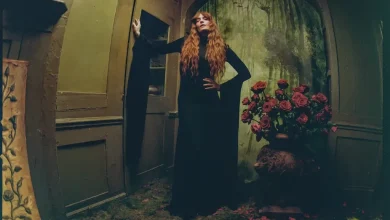‘Human safaris’ in Sarajevo: Milan investigates 1990s trips where tourists allegedly paid to kill civilians

The Milan Attorney General’s Office has opened an investigation into a chilling case that recalls the infamous Sniper Alley of Sarajevo — the city besieged from 1992 to 1996 by Serb-Bosnian militias during the Bosnian War. From the surrounding hills, they shot at passersby who had no choice but to cross that street and expose themselves to being killed. It is estimated that more than 11,000 civilians were murdered in this way.
The investigation, revealed by Italian media, concerns an alleged crime of intentional homicide aggravated by cruelty and vile motives. Its central thesis is that some Italians paid to go to Sarajevo for the weekend and shoot at people, as if it were a hunting trip.
Ordinary citizens, with ties to far-right circles and passionate about weapons, allegedly hired this service as a kind of human safari in the besieged city. According to the complaint, they flew from Trieste to Belgrade on the Serbian airline Aviogenex, which at that time operated from the Italian airport. To be weekend snipers, they reportedly paid the equivalent of between €80,000 ($92,800) and €100,000 ($116,000), according to the first hypotheses of the investigation. Shooting at children cost more. Information that has come to light mentions a Milanese businessman who owns a private cosmetic surgery clinic, as well as citizens from Turin and Trieste.
The complaint, documented in 17 pages, was filed by writer and journalist Ezio Gavazzeni, supported by the respected former magistrate Guido Salvini and Benjamina Karic, mayor of Sarajevo from 2021 to 2024, who has been collecting information about something that had been rumored for years and that came to light in 2023 in Sarajevo Safari, a documentary by Slovenian filmmaker Miran Zupanic. This film gathered testimonies and offered clues about the possibility that wealthy foreigners paid to travel to the Bosnian city to personally shoot at human beings.
The Bosnian Attorney General’s Office shelved an investigation because of the difficulty of probing such a case in a country still deeply divided and scarred by war, Gavazzeni told La Repubblica on Tuesday. As for Serbian justice, he claims that for that country’s courts, the matter is “an urban legend.” That is why he has tried to open the case in Italy. “We are talking about wealthy people, with reputations — businessmen — who during the siege of Sarajevo paid to kill unarmed civilians. They left Trieste for a manhunt and then returned to their respectable daily lives,” he stated.
A Bosnian soldier carrying a child, followed by a woman also holding a child, run across a street to avoid sniper fire in Sarajevo, June 29, 1995.
Prosecutor Alessandro Gobbis has a list of several people who can provide testimony and will be called to testify. According to the writer, these bloodthirsty war tourists could number around 100. “I hope they can locate at least one or two, maybe 10,” he said.
Among the witnesses, Gavazzeni states, is a Bosnian intelligence agent with the initials E. S., who was aware of the events and claims that Italian intelligence — which had personnel in Sarajevo — received information about them in 1993 and that classified files on the matter may exist. “He told me that Bosnian intelligence warned of the presence of at least five Italians in the hills around Sarajevo, accompanied there to shoot at civilians,” he asserted.
He also cites a Slovenian intelligence official, some victims, and a wounded firefighter who, during the trial of Serbian leader Slobodan Milosevic in The Hague, spoke of “tourist shooters” with distinctive clothing and weapons that stood out among Serbian soldiers.
The Bosnian consul in Milan, Dag Dumrukcic, has guaranteed the “full cooperation” of his country’s government. “We are eager to uncover the truth about such a cruel matter and settle accounts with the past. I am aware of some information that I will contribute to the investigation,” he declared.
In the past, there were also well-known and highly controversial images of Russian writer Eduard Limonov in the hills of Sarajevo, alongside Serb-Bosnian leader Radovan Karadzic. In them, they showed him how the snipers shot at people, and he himself took up a machine gun and fired a few shots.
Sign up for our weekly newsletter to get more English-language news coverage from EL PAÍS USA Edition




